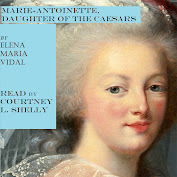The French Monarchs created a whole administration, the Eaux et Forts (waters and forests) to cover the network of forests around the Kingdom: such forests as Fontainebleau, Vincennes, Villers-Cotterêts, Retz, and St. Germain were monitored by a large team of foresters. The Louvre was built originally as a hunting box for the pursuit of wolves. In England, even more rigid forest and game laws were passed. As in France, a full civil service of foresters in varying ranks was appointed. Such well known English Forests as the New Forest, Epping Forest, the Forest of Dean, Sherwood Forest (home of Robin Hood) and Shakespeare’s Forest of Arden were all so set aside. The Holy Roman Emperor himself had a rather similar setup; among his domains was the grand and spacious Forest of the Ardennes. In all countries, small or dangerous game was permitted to commoners to hunt: fox, wildcat, badger, squirrel, hare, and sometimes rabbit or wolf. Landowners could (and were) granted hunting rights on their own land.Share
This hunting was generally conducted on horseback with hounds—in a manner similar to that of fox-hunting today. Together the hunters would ride after their quarry, signalling to each other by means of horns—when the quarry was first sighted, and so on. Kings and nobles grew to love the sport; Elector John George II of Saxony (reigned 1656-80) was hereditary Lord High Master of the Chase for the Holy Roman Empire, and so loved hunting that he refused the crown of Bohemia because their stags were inferior in size to his own Saxon breed. He established the magnificent Hunt Museum remaining today in Dresden. In this he only emulated Bl. Charlemagne, first of the Holy Roman Emperors. In between fighting at the frontiers of Christendom, the great Emperor would gallop through the forests in pursuit of game. His city of Aix-la-Chappelle (Aachen) owes its origin to one of his hunting trips.
While pursuing a stag across a stream, his horse immediately pulled his hoof out of the water and retreated. Examining the leg, Charlemagne found it scalded and the water hot; he built a chapel in the shape of a horseshoe on the spot. After he built his palace there, the city grew up around it. To this day the rotonda around the hot spring is in the shape of a horse shoe, reminding us of its origins. The Emperor was summoned one time to the Vosges mountains, where a bear was terrorizing the neighborhood. With his huntsmen and hounds, Charles pursued him; the bear disabled many of the hunters and dogs. At last, Charles alone standing up to him, face to face on a hill-top, where the bear took the monarch in a crushing bear-hug. At last, Charles struck him with his dagger and flung the animal off the precipice. The witnesses cried out, “long live Charles the Great!,” which is how he came to be called Charlemagne. Although he was jealous indeed of his hunting rights, he allowed the monks of the Abbey of St. Denis to chase the stags who were overgrazing their woods, on the proviso that the venison would be fed to the postulants and novices, and the hides used to bind missals.
His successor on the throne of France, many centuries later, St. Louis IX was just as great a huntsman. In Palestine during the crusades he hunted lions, while at home he allowed commoners to hunt, provided always that they give a haunch of any animal they killed to the lord of the place. From this comes the custom in Europe today of giving the foot of the slain quarry to whomever leads the hunting party. Louis XV stopped on his way back from his Coronation in Rheims to chase the stag in Villers-Cotterêts before returning to Paris. The martyred Louis XVI was also particularly fond of hunting. Even such Popes as Pius II, Julius II, and Leo X were avid huntsmen, and it was permitted even to religious, so long as the animals pursued presented a threat either to people or crops. (Read more.)
Tota pulchra es Maria
4 days ago


















No comments:
Post a Comment